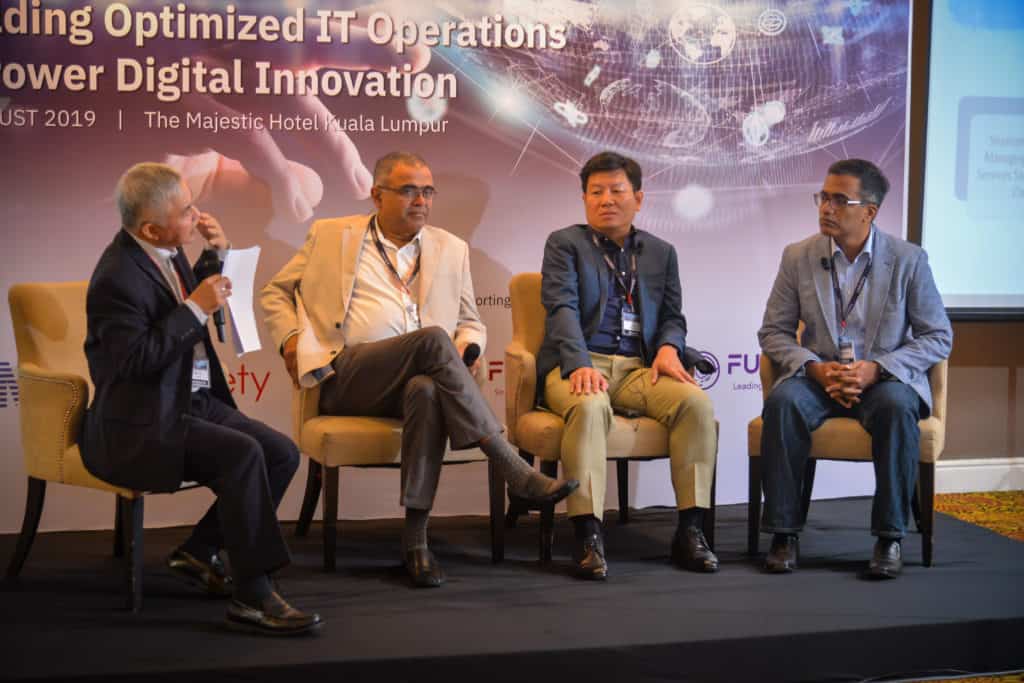The CFO job has just gotten harder.
Tasked with fiscal responsibilities, many see themselves at the frontline of business. When it comes to exploring new revenue streams, expanding market share, and merging or acquiring potential startups, their decisions count.
Meanwhile, they continue to manage the corporate purse strings, explore financing opportunities, maintain fiscal reserves, offer financing opportunities to their partners and suppliers, and ensure that their companies are financially stable.
To achieve all these and more, many are turning to the digital transformation of the finance function. The hope is that new emerging technologies can give them agility, transparency, and scalability they need.
There is only one problem: maintenance. And if not properly managed, it can derail CFOs’ best laid out plans.
Rethinking finance transformation
The benefits of transformation are clear.

Beng Siew Toh, chief financial officer, IBM Malaysia
Just ask IBM. It centralised its shared services for the region in Malaysia. “We were looking to centralise globally. This allows resources can be relocated and optimized,” said Beng Siew Toh, chief financial officer, IBM Malaysia attending the joint CXOCIETY and IBM C-Engage Forum: Building optimized IT operations to power digital innovation.
Toh noted that despite the talk about innovation and the new economy, the reality is that CFOs always have to meet annual cost-cutting targets. Driving transformation while meeting these targets can be a constant struggle.
"When we did our shared service centralisation, we did not look at just accounting, budgeting, and planning. The way we saw our transformation returns was the cost of us doing and supporting the business at a reduced cost and headcount," she said.
Centralising shared services in Malaysia was not the only transformation that IBM did. Concurrently, the company concentrated its IT functions in Australia and reducing the number of CIOs to one.
The net effect: two expert organizations that could now align themselves with each other needs. “Before, both our organizations were dispersed.” The stronger alignment helped Toh to see the value of IT in driving finance transformation and efficiency.
For example, IBM used robotic process automation to “process the numerous journals in IBM,” said Toh. The company used blockchain for financing its partners to keep all transactions transparent.
Intelligent dashboards and chatbots kept her informed in real-time of the fiscal health of the company and guided her in understanding where the risks and concerns lie. Watson Analytics was used “for example, in monitoring travel and expense claims and discovering anomalies across the organization,” said Toh.
“So, as finance folks, it is not about real cost savings. It is about the avoided costs of employing people who do not want to do a specific type of work, and as such may be pre-disposed to not joining the company,” she elaborated.
She also noted that transformation helped the company create new roles – with the shared services location leader being one of the most important additions.
"As each vertical unit becomes self-sufficient, we need to look across the organisation. So, we have a shared services location leader tasked to optimize the end-to-end transaction and get an end-to-end view. This allows us to resolve situations where people point fingers at each other," said Toh.
Transformation gaps
While the benefits are clear, there is one huge hurdle: increasing maintenance complexity.
Part of the problem is the increased adoption of cloud computing for core infrastructure, applications, and processes.

Joey Mak, general manager for Global Technology Services, IBM Malaysia
"Your data centre is no longer behind secured doors. Some of it is in the cloud, and some of it is in your pocket [alluding to edge devices]. It is a given," said Joey Mak, general manager for Global Technology Services, IBM Malaysia, addressing an audience of senior technology and finance executives.
Cloud has helped companies to refocus on their business needs. "Freedom, speed, agility and being secure. These are now standard business demands," Mak added.
But it has also made maintenance and support complex. Many companies are embarking on hybrid multi-cloud journeys. Ensuring that the infrastructure is well supported and maintained can be a considerable challenge. When a cloud application becomes unavailable or data inaccessible, the reality is that there will be pointing of fingers.
Vendors respond
In a panel discussion, Shashank Luthra, managing director, Services Sales, ASEAN, Cisco noted that the vendor community understands this well.
They are building partnerships and alliances to resolve some of the operational issues while spending on research and recruiting the right people. The idea is that part of this maintenance conundrum can be assumed by the vendor community.

Shashank Luthra, managing director, Services Sales, ASEAN, Cisco
Several factors contribute to the rising cost [on the part of the vendor community] of maintaining support. "Technology keeps changing. Technical staff need to undergo regular training and certification. Regulations keep evolving. These factors contribute to growing complexity," acknowledged Luthra.
Gopalakrishnan Kolathu, business development executive, IBM Asia Pacific, added that technology can help manage part of this complexity.
For example, IBM is building expert cores. “My colleagues will have L2 knowledge and skills available on the ground or remotely.” This leads to faster problem resolutions.
IBM is also banking on its strong artificial intelligence heritage to manage maintenance proactively.

Eric Lo, lead for APAC Alliance & GSI Biz at F5 Networks
Eric Lo, lead for APAC Alliance & GSI Biz at F5 Networks highlighted the need to keep security in focus, and ensure the business conversation stays honest, especially with CFOs.
"It is important for the vendor to step up their engagement and explain to the customer what they can do from a process standpoint. But at the same time, as an application vendor, there are a lot of things that can be handled without human intervention. That gives [customers] assurance and peace of mind," he said.
Making the case for CMOs
CFOs are looking for to find ways to overcome the maintenance hurdle. They want to avoid their company’s best transformation intentions being mired by IT complexity. It can also hobble CFO’s transformation of their function.
Creating a large IT organisation well-versed in different vendor products, and the latest solutions is an expensive proposition. The alternative is to outsource everything to a vendor but be restricted to a service level agreement.
The panellists suggested a third option: creating a chief maintenance officer (CMO) position.

Gopalakrishnan Kolathu, business development executive, IBM Asia Pacific
"Businesses need to worry about the business at hand and not the quality of the IT infrastructure. Unfortunately, this plumbing gets more complex with each new dimension added as part of a company’s ongoing transformation. CIOs concede that technology is mind-numbingly rapid and is coining new phrases. Your real concern [as CFOs] lives elsewhere. What you need is a technology partner with the right relationships to address these issues. That is the role a chief maintenance officer," said IBM’s Kolathu.
He further argued that what is needed is a person or a partner who has access to infrastructure data.
Vendors as your CMO
Kolathu and Cisco’s Luthra noted that vendors are gearing up for such roles through new services and solutions.
One example is IBM’s multivendor support (MVS) services. It allows the chief maintenance officer or the CIO to tackle the challenges of managing a heterogeneous environment.
“I will say it is [less expensive] for [vendors] to take on the role of CMO. We have the economies of scope and scale," Luthra noted in response to the questions why vendors are better suited to take on CMO role.
Meanwhile, Kolathu referred to the Forrester Total Economic Impact study that was done to assess IBM’s MVS offering. The report addresses key issues important to enterprises: extension of the useful life of the equipment, allowing companies to defer expenditure, simplified support environment, and less downtime by avoiding incidents and outages.
"The results were clear: IBM MVS offers 25% reduction in support spending, 20% reduction in time spent on hardware, 22% reduction in Mean-Time-To-Recover (MTTR) and 14% saved from the capital budget. It gives a strong case for CFOs to look at multivendor services partner."
“The most important thing is that you want the right partner or person – one who can go across multiple vendors,” Luthra added.
For CFOs, a CMO partner gives them the ability to be strategic and cost-efficient at the same time. In today’s constantly-shifting market landscape, this is a definite advantage.





